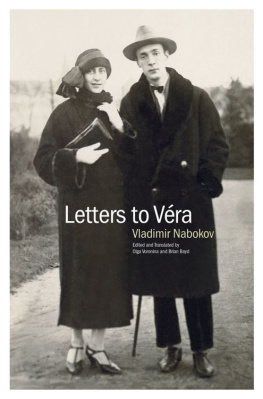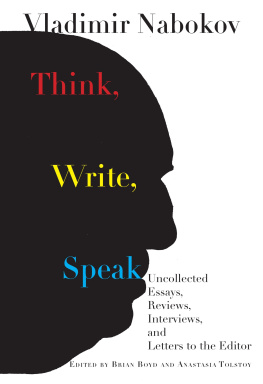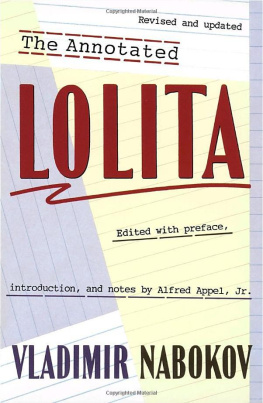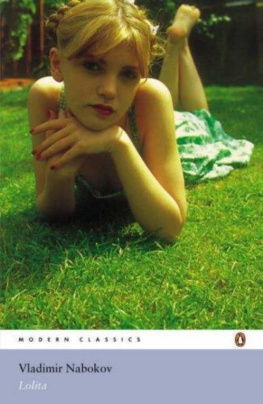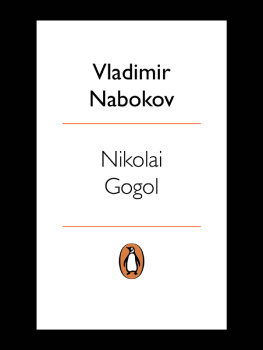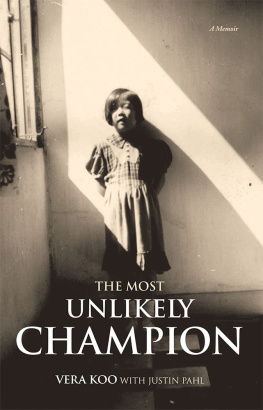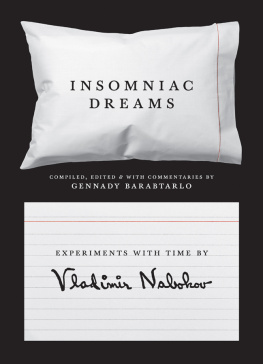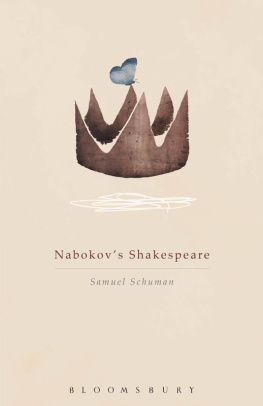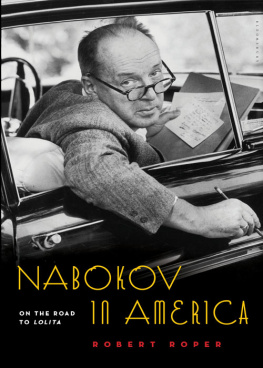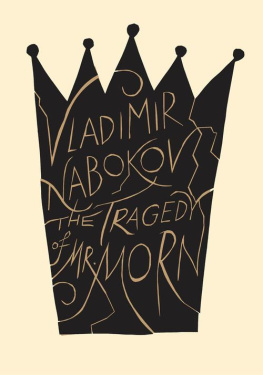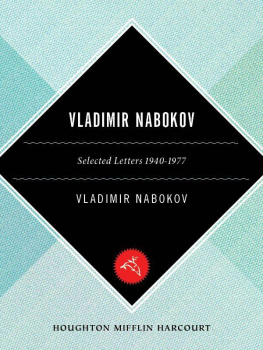Vladimir Nabokov
LETTERS TO VRA
Translated and edited by Olga Voronina and Brian Boyd
Contents
Appendix One: Riddles
with Gennady Barabtarlo
Appendix Two: Afterlife
Brian Boyd
List of Plates
All illustrations from the Estate of Vladimir Nabokov, unless otherwise noted.
List of Abbreviations
Books are by Vladimir Nabokov unless otherwise noted. For full bibliographical details, see Bibliography. This list includes abbreviations used in the letterheads.
| AL | autograph letter, unsigned |
| ALS | autograph letter, signed |
| AN | autograph note |
| ANS | autograph note, signed |
| APC | autograph postcard, unsigned |
| APCS | autograph postcard, signed |
| BB | Brian Boyd |
| DBDV | Dear Bunny, Dear Volodya: The NabokovWilson Letters, 19401971 |
| DN | Dmitri Nabokov |
| EN | Elena Nabokov (mother) |
| EO | Alexander Pushkin, Eugene Onegin, trans. with commentary by Vladimir Nabokov |
| Gift | The Gift |
| KQK | King, Queen, Knave |
| LL | Lectures on Literature |
| LRL | Lectures on Russian Literature |
| MCZ | Museum of Comparative Zoology, Harvard University |
| MUSSR | The Man from the USSR and Other Plays |
| NG | Nikolay Gogol |
| NsBs | Nabokovs Butterflies |
| PP | Poems and Problems |
| RB | Russian Beauty and Other Stories |
| Schiff | Stacy Schiff, Vra (Mrs. Vladimir Nabokov) |
| SL | Selected Letters 19401971 |
| SM | Speak, Memory |
| SO | Strong Opinions |
| Sog | Soglyadatay, 1938 |
| SoVN | Stories of Vladimir Nabokov |
| SP | Selected Poems |
| Stikhi | Stikhi, 1979 |
| TD | Tyrants Destroyed |
| TGM |
| TMM | The Tragedy of Mister Morn |
| V&V | Verses and Versions |
| VC | Vozvrashchenie Chorba |
| VDN | Vladimir Dmitrievich Nabokov (father) |
| VN | Vra Nabokov |
| VNAF | Vra Nabokov audiofile (for 1932 letters, from BB tape recording) |
| VF | Vesna v Fialte |
| VN | Vladimir Nabokov |
| VNA | Vladimir Nabokov Archive, Henry W. and Albert A. Berg Collection, New York Public Library |
| VNAY | Brian Boyd, Vladimir Nabokov: The American Years |
| VNRY | Brian Boyd, Vladimir Nabokov: The Russian Years |
Envelopes for the Letters to Vra
Brian Boyd
I dreamt of you last nightas if
I was playing the piano and you
were turning the pages for me.
VN to VN, 12 January 1924
I
No marriage of a major twentieth-century writer lasted longer than Vladimir Nabokovs, and few images anywhere encapsulate lasting married love better than the 1968 Philippe Halsman photograph of Vra nestled under her husbands right arm and looking up towards his eyes with steady devotion.
Nabokov first wrote a poem for Vra in 1923, after having spent only hours in her company; the miracles we know, no one knows, and no one loves the way we love.
Nabokov would later call his marriage , with whom he fell into an intense affair in 1937. That year was the darkest and most painful in the Nabokovs marriage, and an exception, as the letters attest. But although the sun of young love shines or shimmers in many of the early letters, other troubles becloud much of the correspondence: Vras health and his mothers, their constant shortage of money, their distaste for Germany, and his exhausting search for refuge for his family in France, England or America as Hitlers rise threatened the very existence of the Russian migr community where he had shot to not-quite-starving stardom.
Vra Slonim first encountered Vladimir Nabokov as Vladimir Sirin, the pen-name he had adopted in January 1921 to distinguish his own byline from that of his father, also Vladimir Nabokov. Nabokov senior was an editor and founder of Rul, the Russian-language daily in Berlin, the city that in 1920 had become the centre and magnet for the post-1917 Russian emigration. Nabokov junior had been publishing books and contributing to journals in Petrograd since 1916, when he still had two years of high school to complete, and by 1920, in the second year of his familys emigration, his verse was already being admired by older writers like Teffi and Sasha Chorny.
Much of the time Letters to Vra features unfamiliar profiles of Vladimir and Vra. The familiar images begin when Nabokov added the first dedication To Vra in 1950, exactly halfway through the story of their love. And when Lolita was published in America in 1958, and in the years that followed, a flood of translations of his old Russian oeuvre, as well as his new English workfiction, verse, screenplay, scholarship and interviewswould appear with more dedications to Vra. The writer and his wife were photographed together in the many interviews his fame precipitated, and the story of her editing, typing, driving, teaching, corresponding and negotiating for him became part of the Nabokov legend. Yet the second half of their life together, from 1950 to 1977, occupies only 5 per cent of the letters that follow, and the remaining 95 per cent reflects years much more strained than this final spell of worldwide fame.
The Slonim family (father Evsey, mother Slava, and daughters Elena, Vra and Sofia) escaped Petrograd via many adventures in Eastern Europe before settling in Berlin early in 1921. There, Vra told me, she was very well aware of Nabokovs talent before she met him, in Berlins migr book world: Nikolka Persik, a translation of Romain Rollands 1919 novel Colas Breugnon, in November 1922; a sixty-page collection of recent verse, Grozd (The Cluster), in December 1922; a 180-page collection of verse over several years, Gorniy put (The Empyrean Path), in January 1923; and a translation of Alices Adventures in Wonderland, Anya v strane chudes (Anya in the Land of Wonders, March 1923).
Of much more interest for one attractive and strong-willed young woman with a passion for literature was the evidence of a romantic rift in Sirins recent verse. In the wake of the assassination of his father on 28 March 1922, Nabokov had been allowed by the parents of the vivacious beauty Svetlana Siewert to become engaged to her, despite her being much younger than him, seventeen to his twenty-three. Poems he wrote for Svetlana within the first year of his knowing her filled the volume of his most recent verse,

